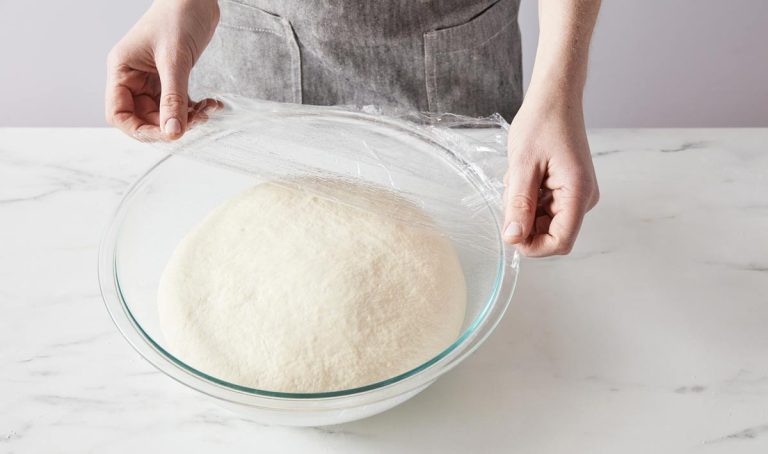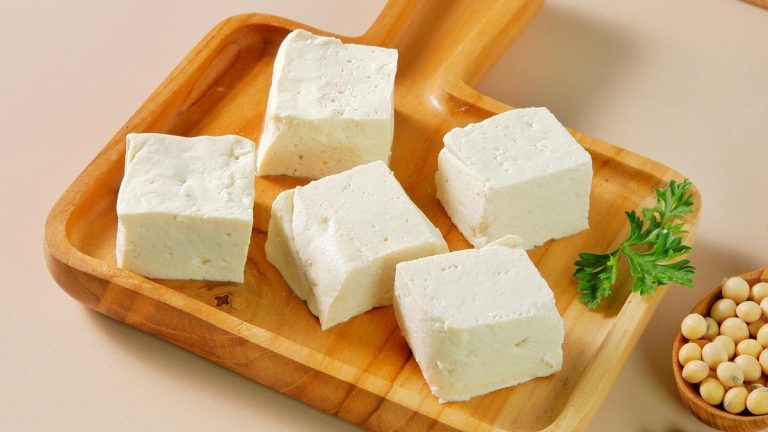Great Northern Beans vs Navy Beans: The Ultimate Bean-Off
Imagine this: It’s a chilly evening, and you’re in the kitchen, ready to whip up a cozy dinner. You glance at your pantry, and there they are… Two formidable contenders staring back at you: Great Northern Beans vs Navy Beans. The big question presents itself: which bean will take the spotlight in tonight’s culinary creation?
On one side, we have the Navy Beans, the smooth operators of the legume world, known for their creamy texture and rich flavor. On the other, the Great Northern Beans bring a slightly grainier and milder profile, ready to complement your dishes with their unique charm. Both beans are nutritional heavyweights, bursting with fiber, protein, and a treasure trove of vitamins and minerals.
But here’s the kicker: they each have their unique flair that can transform a simple recipe into a flavor fiesta! So, as you embark on this bean bonanza, the real question remains – who will come out on top in the epic bean-off?
So get ready to dive deep into the world of these legume legends and discover which one deserves a spot in your kitchen!
What Is Great Northern Beans?

So, what is Great Northern Beans? Picture these little legumes as the delightful underdogs of the legume scene, ready to transform your dishes with their subtle charm! Great Northern Beans are medium-sized, oval-shaped, and typically creamy white, boasting a slightly grainy texture that gives them a charming character.
Historically, these beans made their debut in the culinary scene of the United States in the early 19th century and have since become a staple in hearty recipes. Their mild flavor makes them a fantastic canvas for spices and seasonings, effortlessly absorbing the essence of whatever dish they join. From creamy soups to savory casseroles, these beans shine in every role.
Nutritionally, Great Northern Beans are powerhouses, packed with protein, fiber, and essential vitamins and minerals, making them a great addition to a healthy diet. Whether you’re simmering them in a pot of chili or tossing them in a salad, Great Northern Beans bring their magic of versatility and nutrition to your table.
What Are Other Names for Great Northern Beans?
Great Northern Beans may be their official name, but like any well-traveled legume, they’ve picked up a few aliases along the way. Depending on where you are or who you ask, these beans are known by a variety of names that hint at their versatility.
In some regions, you might hear them called “Large White Beans” due to their size and color. Other times, they go by “Common Beans” or simply “White Beans” in recipes that don’t specify. While less common, you may even find them referred to as “Haricot Beans” in certain parts of the world. But no matter what you call them, these beans are always ready to bring their mild, nutty flavor to your dish!
What Is Navy Beans?

So, what is Navy Beans? Despite their maritime-sounding name, Navy Beans are more at home in a hearty stew than on the high seas! These small, oval-shaped white beans earned their name because they became a staple food for the U.S. Navy in the 19th century – nutritious, long-lasting, and easy to store, they were the perfect addition to sailors’ diets.
Navy Beans pack a mild, creamy flavor with a rich texture that makes them a beloved choice for all kinds of comfort food. From the classic Navy Bean soup to baked beans, these beans are always ready to dive into savory dishes and soups, thickening and adding flavor as they simmer.
Nutritionally, they’re a powerhouse, full of protein, fiber, and essential minerals, making them an excellent choice for maintaining a healthy lifestyle. Their ability to absorb flavors from herbs, meats, and spices makes Navy Beans a culinary favorite in countless recipes.
What Are Other Names for Navy Beans?
Navy Beans might be their claim to fame, but these little legumes have quite a few other names in the culinary world! Depending on where you’re cooking or what recipe you’re using, you might encounter them as “Pea Beans” due to their small, round shape. Some regions also refer to them as “Boston Beans”, especially when they’re the star ingredient in traditional baked bean dishes.
In other cases, they go by “Haricot Beans” in European recipes, a name they share with other white bean varieties. No matter what name they go by, Navy Beans consistently bring their creamy goodness to every dish!
What Are the Similarities Between a Navy Bean and a Great Northern Bean?
Navy Beans and Great Northern Beans are like close-knit siblings in the legume family – different in some ways but sharing a lot of common traits! While each brings its own personality to the table, here’s where these two beans line up:
White Color and Mild Flavor
Both Navy and Great Northern Beans boast a creamy, white color, making them visually interchangeable in dishes. Their mild, slightly nutty flavor also allows them to blend seamlessly into recipes, soaking up the taste of whatever spices, herbs, or broths you throw their way.
Nutritional Powerhouses
If you’re looking for a fiber and protein punch, both beans have your back! They’re packed with nutrients like fiber, iron, and folate, making them a health-conscious choice for any meal. If you’re whipping up a salad or a soup, both beans offer a nutritious boost.
Versatility in the Kitchen
Both of these beans shine in the versatility department. From hearty stews to creamy soups, casseroles, and even bean dips, Navy and Great Northern Beans can be used interchangeably in most recipes. Their ability to absorb flavors makes them ideal for dishes that simmer or cook low and slow.
Affordable and Long-Lasting
Stocking up? Both beans are budget-friendly and have a long shelf life, making them reliable pantry staples. You can keep them on hand for months without worrying about spoilage!
What Is the Difference Between a Navy Bean and a Great Northern Bean?
When it comes to beans, Navy Beans and Great Northern Beans may seem like two peas in a pod – but don’t be fooled! They each have their unique characteristics that make them stand out in the culinary world. Let’s dive into the delightful details and explore the differences between these two popular legumes!
Appearance
Navy Beans are the petite powerhouses of the bean family. They are small, oval-shaped, and typically have a smooth, creamy white skin. On the other hand, Great Northern Beans are a bit larger, more elongated, and have a slightly grainier texture. They also sport a soft white shade but with a bit more personality. So, while both are white beans, Navy Beans might be described as the cute button, whereas Great Northern Beans are like the elegant, elongated cousin at the family reunion!
Taste and Texture
Now let’s talk about flavor! Navy Beans offer a creamier and richer experience – imagine sinking your teeth into a soft, buttery pillow. They’re like the comforting embrace of your favorite blanket on a chilly night. In contrast, Great Northern Beans have a milder, slightly nutty flavor and a bit of graininess that gives them character. When you bite into them, they provide a gentle chewiness, adding a nice textural element to your dishes. It’s a delicious duo of creaminess versus mild nuttiness, making them both perfect in their own right!
Nutritional Value
In the nutrition department, both beans pack a healthy punch! Navy Beans are often hailed for their protein prowess, providing about 19 grams of protein per cup. They also boast a hearty fiber content of around 14 grams, helping you feel full and satisfied. Great Northern Beans aren’t far behind, offering about 15 grams of protein and 12 grams of fiber per cup. Both varieties are nutritional powerhouses, loaded with essential vitamins and minerals that make your meals not just delicious but healthy too!
Here’s a quick nutritional comparison to see how these two legume champions stack up against each other:
| Nutrient | Great Northern Beans | Navy Beans |
| Protein | ~15g per cup | ~19g per cup |
| Fiber | ~12g per cup | ~14g per cup |
| Calories | ~210 per cup | ~260 per cup |
| Iron | ~24% DV | ~30% DV |
| Folate | ~50% DV | ~65% DV |
So whether you choose Navy or Great Northern, you’re in for a nutritious treat that will keep you feeling energized and satisfied!
Cooking Time
Cooking times can be a crucial factor when planning meals without a doubt. Navy Beans typically take around 1 to 1.5 hours to cook when soaked, while Great Northern Beans are a bit quicker, usually coming in at about 45 minutes to an hour. This slight difference might not seem like much, but when you’re racing against the clock on a busy weeknight, every minute counts! So, if you’re in a hurry, Great Northern Beans might just be your new best friend!
Cost
When it comes to price, both beans are generally affordable options, but there can be slight variations depending on where you shop. Navy Beans often come in a little cheaper, making them a great budget-friendly choice for families. On the flip side, Great Northern Beans may sometimes be a tad pricier, but they often deliver more versatility in dishes. Just think of it as paying a little extra for those elegant, elongated beans that can elevate your recipes!
Best Uses
So, which bean reigns supreme in various dishes? Navy Beans shine in hearty soups and stews, where their creamy texture can meld beautifully with other ingredients. Think of classic Navy Bean soup or a comforting bean chili! Great Northern Beans, on the other hand, make for fantastic additions to casseroles, salads, and even as a side dish. Their mild flavor lets them soak up other seasonings, so they’re perfect for those dishes where you want the beans to play nice with bold flavors. Picture a flavorful bean salad or a scrumptious baked bean dish – heavenly!
Great Northern Beans vs Navy Beans – What Is the Creamiest White Bean?

When it comes to the quest for the creamiest white bean, the competition is fierce! Picture this: Navy Beans strut onto the culinary scene with their smooth, buttery texture, ready to sweep your taste buds off their feet. These little beauties are the cream of the crop in the bean world, effortlessly turning soups and casseroles into velvety delights.
On the other hand, we have Great Northern Beans, the slightly grainier but still delightful contender. They bring a lovely, mild creaminess that’s perfect for blending into dips or adding substance to your favorite chili. Think of them as the dependable sidekick—always there, but perhaps not quite as flashy as the Navy Bean.
So, while both beans are creamy in their own right, if you’re looking for that extra luxurious texture, Navy Beans take home the gold in the creamiest bean contest.
Can Great Northern Beans Be Substituted for Navy Beans?

Ah, the classic culinary question: Can Great Northern Beans be substituted for Navy Beans? The short answer? Absolutely! These two beans are like the versatile cousins at a family reunion – similar enough to keep the peace, yet distinct enough to offer their own flair.
In soups and stews, Great Northern Beans can step in for Navy Beans without missing a beat. They both soak up flavors like a sponge and add a delightful creaminess to your dish. However, if you’re going for that classic navy bean flavor (think baked beans or a hearty chili) know that Great Northern Beans may bring a slightly milder taste to the party.
Now, if you’re looking to impress at your next potluck, swapping these beans can work wonders. So, go ahead and swap them out in your favorite recipes; your taste buds will likely be none the wiser! Just remember, the texture might shift a bit. Because while they can stand in for each other, each has its unique personality.
Final Thoughts
And there you have it, folks! The epic showdown between Great Northern Beans and Navy Beans has come to a close, leaving us with a hearty appreciation for both of these white wonders. Whether you’re whipping up a comforting bowl of bean soup or a zesty bean salad, it’s clear that both beans have their unique strengths.
Great Northern Beans bring a subtle, mild flavor that can easily blend into various dishes, while Navy Beans offer a creamier texture that’s perfect for when you want that luscious, dreamy consistency. So, what’s the verdict? Are you Team Navy, with its rich creaminess, or Team Great Northern, the versatile champion?
Whatever your choice, the true winner is your taste buds! As you embark on your next culinary adventure, remember: the kitchen is your playground, and these beans are just waiting to play a starring role. So keep those pots simmering and let the bean magic continue. Happy cooking!
Frequently Asked Questions
Can Navy Beans Be Considered the Same as Great Northern Beans?
Not exactly! While they share a charming white bean look and have similar traits, Navy Beans are smaller and creamier, while Great Northern Beans are slightly larger with a milder flavor. Think of them as delightful cousins – related, but distinct!
Can Great Northern Beans Be Used in Place of Navy Beans for Soup?
Absolutely! You can swap Great Northern Beans for Navy Beans in soups without worry. Just note that the texture may differ a bit. If Navy Beans add creaminess, Great Northern Beans will bring flavor but might be a tad grainier. It’s like switching ice cream flavors – still tasty, just a different vibe!
Is There Another Name for Navy Beans?
You bet! Navy Beans are also known as “Haricot” beans, “Pearl” beans, or “White” beans, depending on where you are. They might even go by “Boston Beans” in some recipes! So, if you call them Navy or by one of their other nicknames, just know you’re in for a deliciously versatile legume. Feel free to sprinkle in “Haricot” at your next dinner party to sound extra sophisticated!
Which Beans Are the Best Choice, Great Northern or Navy Beans?
When it comes to Great Northern Beans vs. Navy Beans, it really depends on the dish and your preference! Great Northern Beans offer a milder flavor and grainy texture, while Navy Beans are creamier and richer. So, if you’re crafting a light soup or a hearty stew, both beans bring something delicious to the table!







